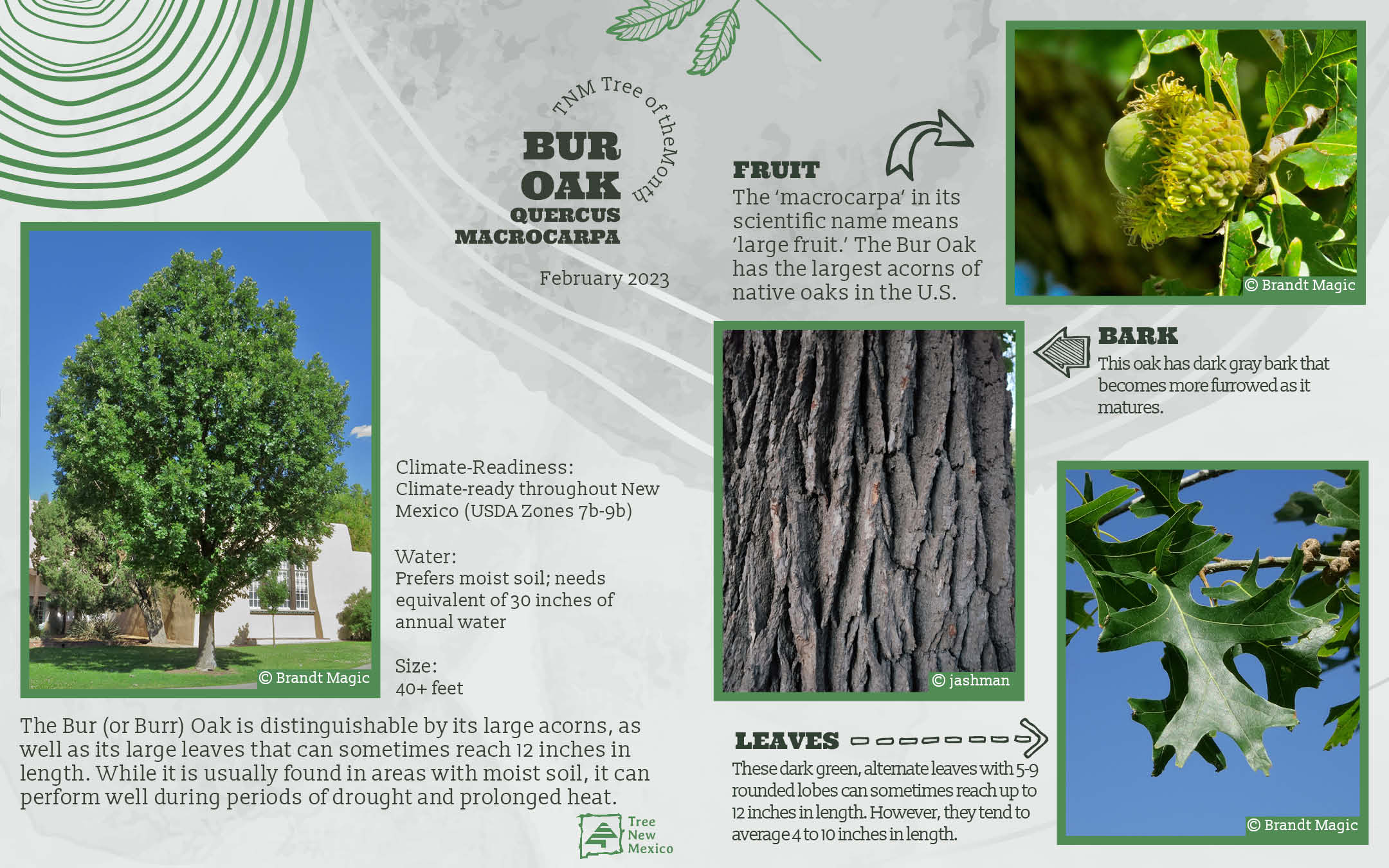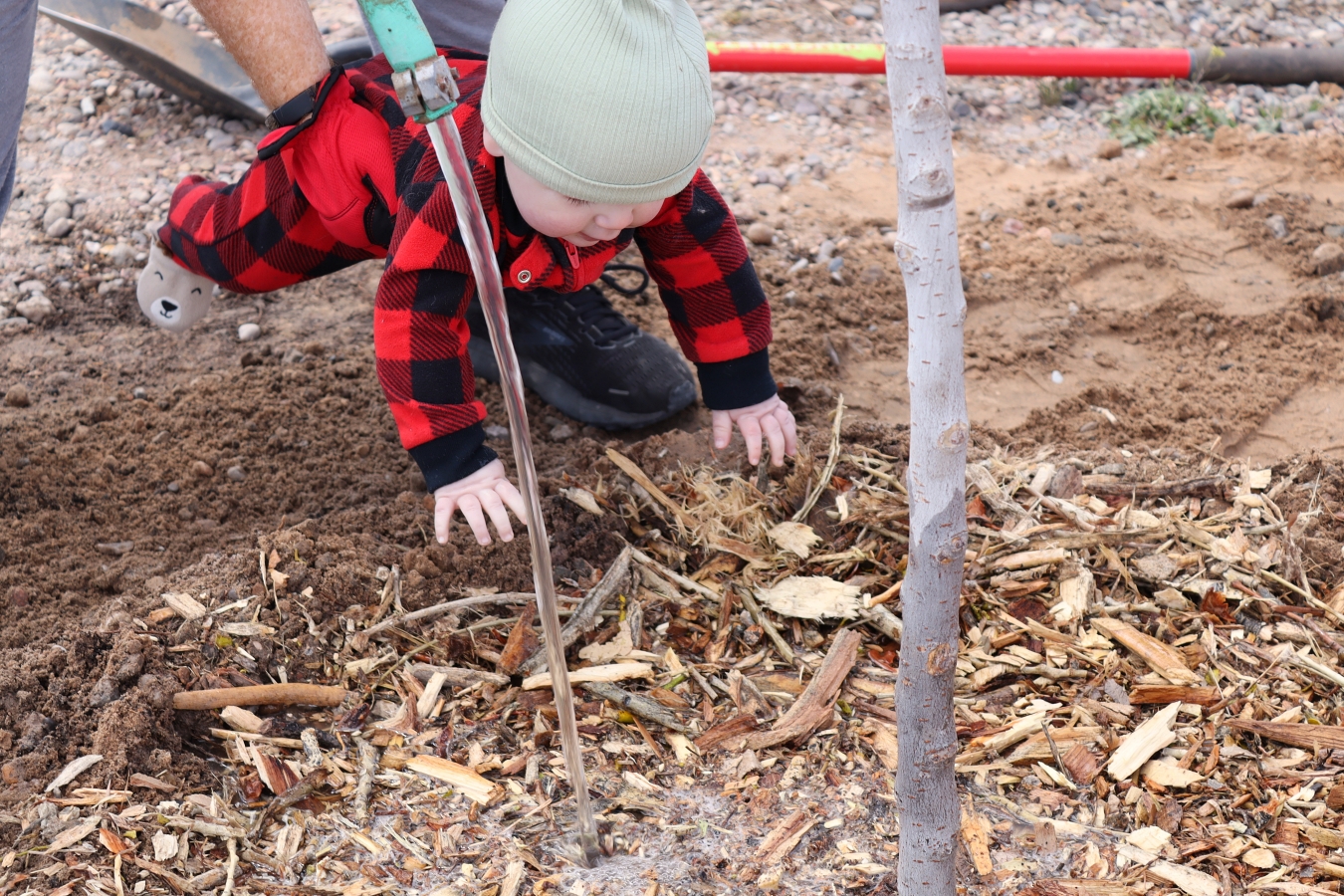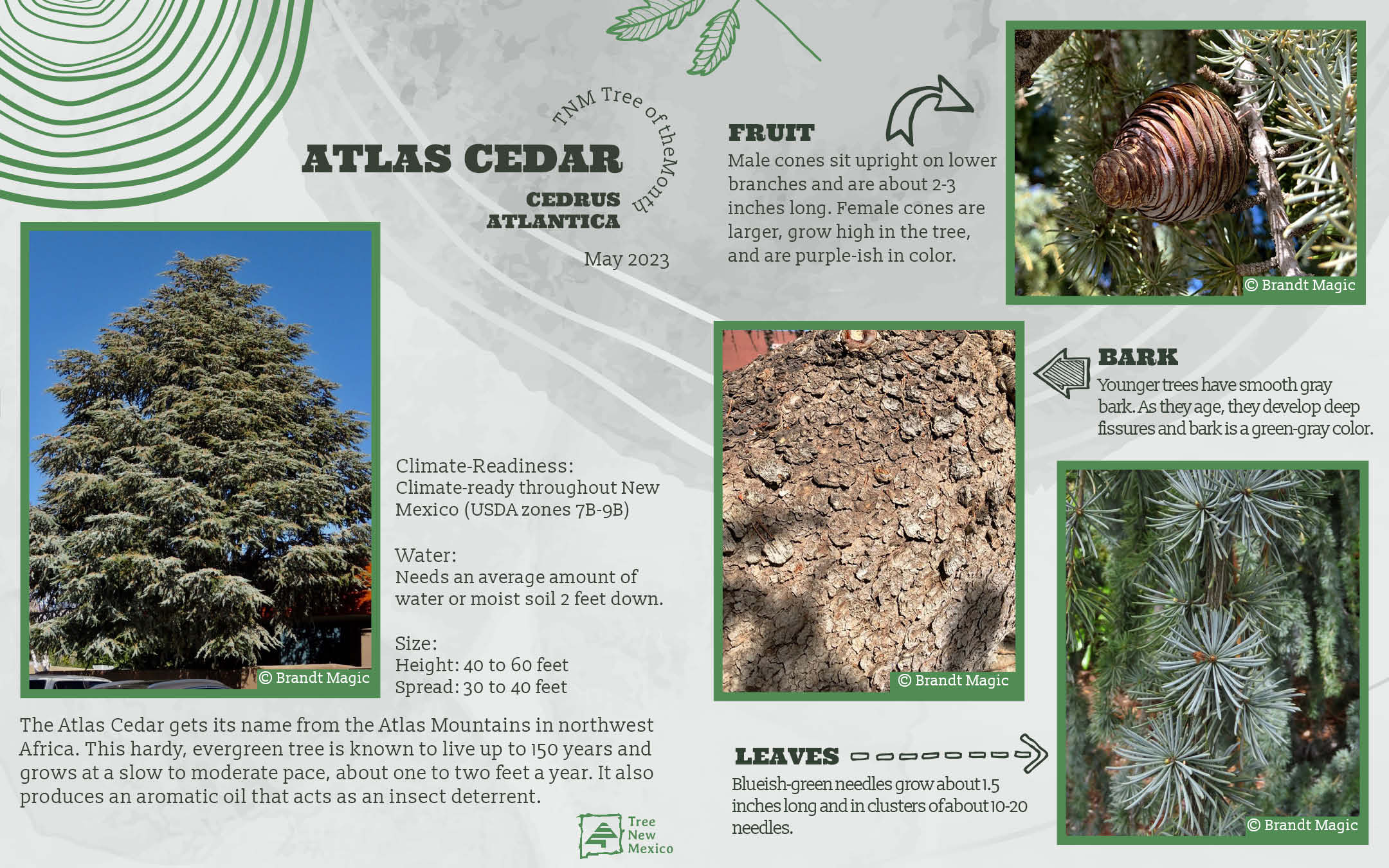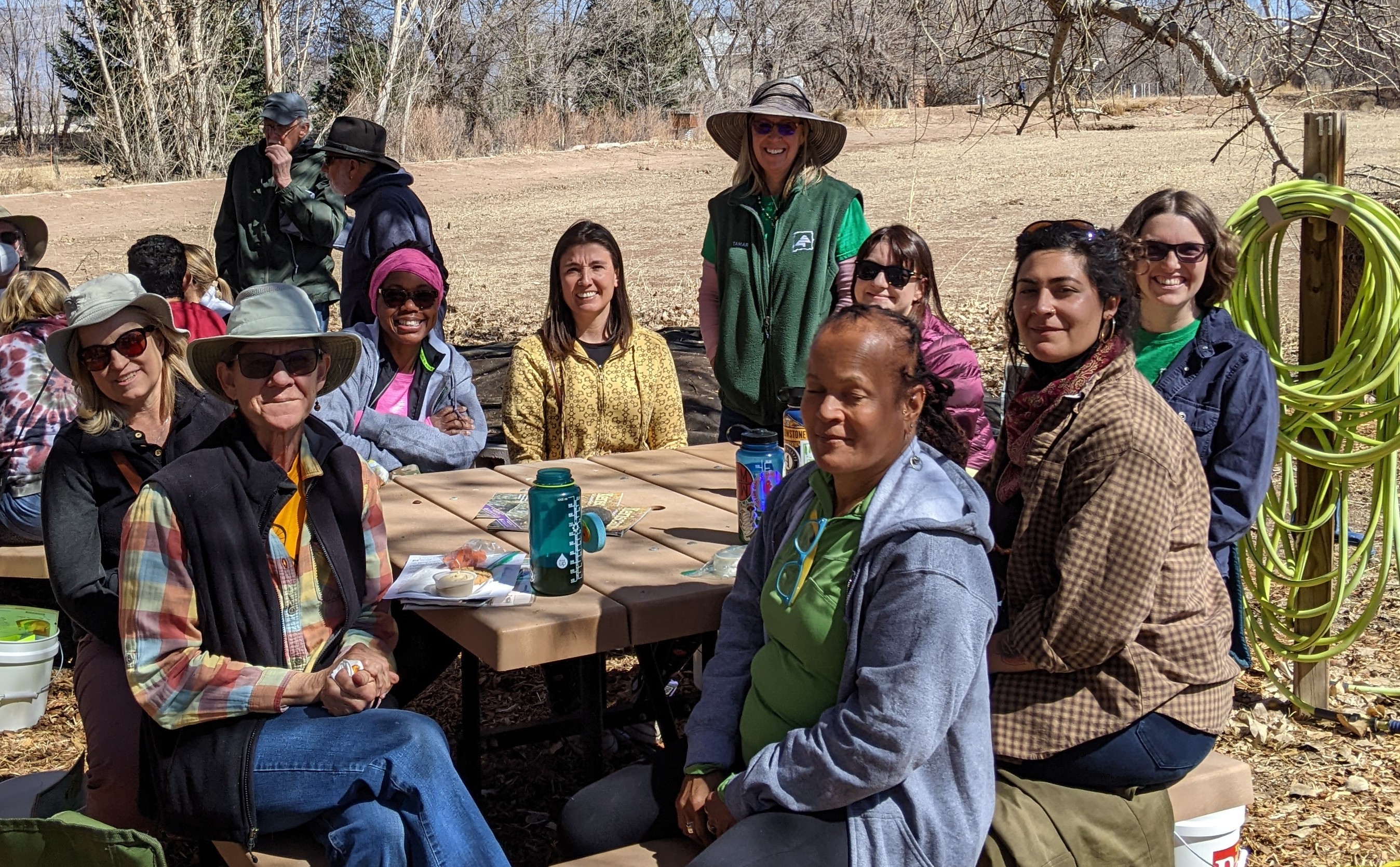
ABC Tree Stewards Gear Up for 2023
February 17, 2023
Spring 2023 Newsletter
March 1, 2023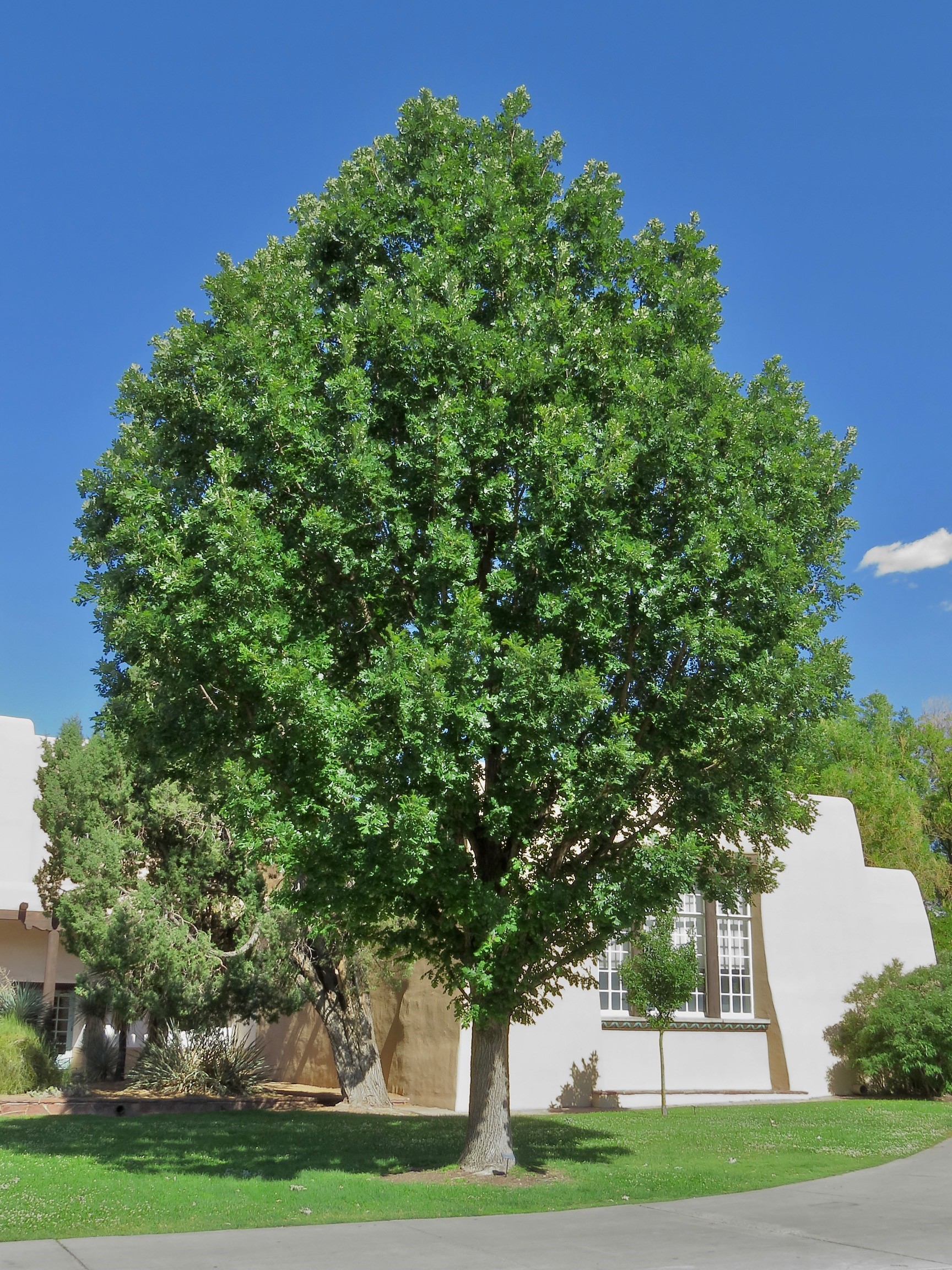
Scientific name: Quercus macrocarpa
Family: Fagaceae
One of the large trees found on NM’s Climate Ready Tree list(s). It has a broad crown and stout spreading branches. Generally, only found in moist soil of bottomlands and along streams. However, once established it can perform well even during periods of drought and prolonged heat. Produces the largest acorns of all native oaks in the U.S. Acorns are enclosed in a deep cup with the upper scales forming a fringed border. The species name “macrocarpa” means large fruit. The leaves, reaching 12-inches in length, are among the largest of the oaks.
Description: A very hardy, drought-resistant, long-lived tree (varies from small to large tree depending on environmental conditions) it belongs to the white oak family, and is adapted to a wide range of soils. Native to the eastern United States. Has very large acorns, stout trunk, and broad, rounded, open crown of stout, often crooked, spreading branches. Bur Oak is the northernmost New World oak. In the West, it is a pioneer tree, bordering and invading the prairie grassland. This tap-rooted species (in non-urban locations) can be expected to grow slowly during the first 3 years after planting; however, after the taproot is established, the growth rate is quite similar to other deciduous trees. With appropriate supplemental watering it can grow equally as quickly without its tap root in an urban environment.
Height: In favorable soils, it can grow in excess of 40 feet
Diameter: 2-4′
Leaves: 4-10″ long, 2-5″ wide. Thick, dark green, alternate, simple leaf with 5-9 rounded lobes separated about half way by a pair of particularly deep sinuses. Yellow-brown in autumn.
Fruit: The acorns of this species, distinguished by very deep-fringed cups, are the largest of all native oaks. The common name describes the cup of the acorn, which slightly resembles the spiny bur of Chestnut. The meat is sweet and mature in first season. Cups are hairless inside. Heavy crops at 3 to 5 year intervals.
Elevation: 4000′ to 8000′
New Mexico Climate Ready Zones: Climate ready throughout the state; USDA Zones 7b-9b
Water Needs: In lower precipitation zones, it must receive supplemental water. 30 inch rainfall equivalent if supplementing.
Soils: Prefers rich, bottomland soils, but tolerates a wide range of soils.
Habitat: From dry uplands on limestone and gravelly ridges, sandy plains and loamy slopes to moist flood plains of streams.
Uses: Is an excellent tree for shade, ornament, shelterbelts and windbreaks.
Wildlife: Bur oak constitutes a good staple food for a wide variety of birds and animals. Both mule and whitetail deer browse on the twigs, foliage, and acorns. Game birds utilizing the acorns are wild turkey, ruffed grouse, sharp-tailed grouse, and wood duck.
Advantages: A durable tree that tolerates urban stresses, wet or dry, acidic or alkaline soils.
Management & Care: No known serious insect or disease problems. Likes ample space and full sun, but can benefit from partial shade.

